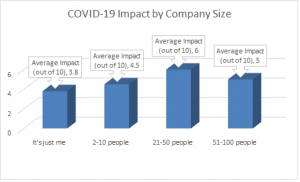
An operating cycle starts with purchase of raw material typically on credit. The number of days in which a company pay back its creditors is called days payable outstanding. The raw materials are processed and converted to finished goods which are sold to customers. The number of days it takes a company https://www.bookstime.com/articles/forming-a-corporation-advantages-and-disadvantages to sell the inventories is called days inventories outstanding. Inventories are predominantly sold on credit which means the company must wait a certain number of days till it receives cash from customers. The time it takes in collecting receivables on average is called the days sales outstanding.
Looking to streamline your business financial modeling process with a prebuilt customizable template? Say goodbye to the hassle of building a financial model from scratch and get started right away with one of our premium templates. 11 Financial may only transact business in those states in which it is registered, or qualifies for an exemption or exclusion from registration requirements. 11 Financial’s website is limited to the dissemination of general information pertaining to its advisory services, together with access to additional investment-related information, publications, and links. For example, businesses like airlines operate on longer cycles due to their reliance on expensive aircraft and employees who often work around the clock. The companies with high operational efficiency are typically those that provide goods or services with short shelf lives i.e., clothing, electronics, etc.
Industry Operating Cycles
In this example, your operating cycle is approximately 128 days, which means it takes 128 days for your investments to return as cash. Understanding and monitoring your operating cycle can help you identify areas for improvement, optimize cash flow, and make informed financial decisions. Considered from a larger perspective, the operating cycle affects the financial health of a company by giving them an idea of how much its operations will cost, as well as how quickly it can pay its debts. A shorter cycle suggests that a corporation can swiftly recover its inventory investment and have adequate cash to satisfy its obligations. The longer the operating cycle, the more cash is tied up in operations (i.e. working capital needs), which directly lowers a company’s free cash flow (FCF).
- A shorter operating cycle is ideal for running efficiently, which can be accomplished in a few ways.
- It is an unadjusted trial balance because the accounts have not yet been updated for adjustments.
- By closely monitoring its operating cycle, the company can identify bottlenecks in the production process.
- This could be due to delays in sourcing raw materials or inefficient manufacturing processes.
- You may use the cost of revenue as an estimate for purchases (i.e., no need to adjust it for changes in inventories).
A shorter cycle indicates that a company is able to recover its inventory investment quickly and possesses enough cash to meet obligations. The length of the cash operating cycle indicates that there will be 70 days between Topple Co receiving cash from sales and paying operating cycle cash to suppliers. This is significantly longer than the industry average of 29 days (53 + 23 – 47) and likely to lead to liquidity problems, as evidenced by the size of the overdraft. Clearly, the shorter the operating cash cycle the lower the finance costs will be.
Limitations of the Operating Cycle Formula
Chartered accountant Michael Brown is the founder and CEO of Plan Projections. He has worked as an accountant and consultant for more than 25 years and has built financial models for all types of industries. He has been the CFO or controller of both small and medium sized companies and has run small businesses of his own. He has been a manager and an auditor with Deloitte, a big 4 accountancy firm, and holds a degree from Loughborough University. This results in transferring the balance in dividends, a temporary account, to retained earnings, a permanent account.
- The post-closing trial balance will contain only permanent accounts because all the temporary accounts have been closed.
- In this ratio working capital is defined as the level of investment in inventory and receivables less payables.
- This is done because the NOC is only concerned with the time between paying for inventory to the cash collected from the sale of inventory.
- In this sense, the operating cycle provides information about a company’s liquidity and solvency.
- The operating cycle formula provides a quantitative measure of the efficiency of a company's operating cycle.
- Acquiring these resources and materials costs money, so you've spent cash before you've produced or sold anything.
The accuracy of the operating cycle formula can be influenced by various factors. These include changes in customer payment patterns, shifts in demand, fluctuations in production cycles, and alterations in supplier payment terms. Therefore, businesses need to consider these factors when interpreting the results of the formula. A low DSI suggests that your company is efficiently managing inventory and selling products quickly.
Net Operating Cycle
This is calculated by dividing 365 with the quotient of cost of goods sold and average inventory or inventory turnover. On the other hand, a long business OC takes a long time for a corporation to convert purchases into cash through sales. Investors can determine a firm's investment quality by tracking its OC's historical record and comparing it to peer groups in the same industry.